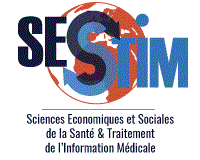Determination of cannabinoids content in light cannabis inflorescences sold in France
Résumé
Abstract In the last 2 years, the number of shops selling CBD‐rich THC‐deprived cannabis flowers (CrTd) has increased considerably in France as in many European countries. The objective of this study was to determine the actual composition of the samples sold in these stores and to discuss regulatory consequences that may affect users. Samples were provided from shops in the region Provence‐Alpes Cote d'Azur (PACA), France. Pictures of the samples were taken before they were weighed then crushed. Twenty milligrams were diluted in 10 ml heptane ethyl acetate (7:1; v:v) for analysis by liquid chromatography coupled to tandem mass spectrometry (LC‐MS/MS). The method was validated according to SWGTOX guidelines for the quantification of cannabidiol (CBD), delta‐9‐tetrahydrocannabinol (THC) and cannabinol (CBN). Thirty‐nine samples obtained between November 2021 and January 2022 in the PACA region were analyzed in this study. Mean content was 0.32% (0.03%–0.77%; STDV = 0.17%; n = 39) for THC, 2.23% (0.01%–5.97%; STDV = 1.29%; n = 39) for CBD and 0.01% (0.004%–0.025%; STDV = 0.01%; n = 19) for CBN. THC content over the threshold defined by the European legislation (>0.3%) was found in 18 of the 39 samples analyzed together with a CBD content <1% in nine samples (23%). None of the products analyzed had health risk messages on the packaging. The consumption of these products may lead to the presence of THC in biological fluids, which can be detected by screening. Users may then find themselves in breach of the law particularly when driving. Consumers should therefore be informed both about the actual composition of these products and about the legal and health risks they run.
